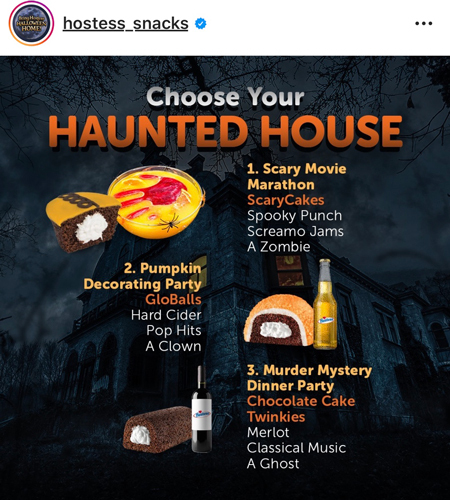COVID-19 Won’t Cancel Halloween, But It Will Change How We Celebrate
Posted
By Allison Goldblatt
Halloween, like many other events and festivities in 2020, will look a bit different this year. In the past, large social gatherings, parties and activities were the hallmarks of Halloween – along with $8.8 billion worth of consumer spending, according to the National Retail Federation (NRF). Given the ongoing status of the pandemic, not only will consumers modify the way they celebrate, but brands and retailers will be forced to alter their messaging and communications surrounding the holiday.
Shifting Consumer Behavior
According to NRF’s survey, over 75% of people say the pandemic will change their Halloween plans, with the majority of respondents indicating they are focusing on safe, in-home activities this year. This means traditional Halloween activities like trick-or-treating, costume parties and hayrides are mostly out of the question, given these have been categorized by the Center for Disease Control and Prevention (CDC) as high-risk. As people find ways to shift their holiday plans, brands will need to creatively address the Halloween tradition without promoting participation in discouraged or unsafe behaviors.
Consumers have several resources to learn about safe Halloween activities. For example, the Halloween and Costume Association created a website that outlines recommendations for socially-distanced alternatives to celebrating based on COVID-19 risk within different counties. The CDC also offers recommendations and gives examples for a wide range of low-risk and moderate-risk activities, such as carving pumpkins, decorating your living space, Halloween movie nights with your immediate household, or masked, outdoor costume parties where proper social distance is maintained.
What This Means for Brands
For businesses, this significant change in consumer behavior both for Halloween and for the upcoming holiday season presents an opportunity. Repurposing last year’s social media copy and images may not be a viable option this year, but organizations have a chance to show the importance of following pandemic-related guidelines like social distancing tin their content and – in turn – inspire positive consumer behavior.
Several brands have successfully taken action to address the Halloween-specific challenges posed by the pandemic. Hershey Co., for example, created a website dedicated to providing resources for a safe and fun holiday. The website offers four categories of content: games and activities, costumes and decorations, recipes and trick-or-treat safety.
Mars Wrigley, the world’s largest candy maker, created an app called TREAT TOWN that offers a virtual Halloween experience for the whole family. The app launched on Oct. 1 and gives Halloween fans of all ages the ability to create personalized spooky avatars, customized Halloween decorations for their in-app door, and the ability to “knock” on the doors of friends and family across the country.

Hostess launched a social media campaign called Bring Hostess Halloween Home to provide recipes and snack ideas to those celebrating at home. The brand partnered with Chef George Duran and other micro-influencers to keep spirits high despite restrictions due to COVID-19.

Even businesses that don’t sell traditional Halloween products like candy, treats or costumes need to be conscious about their posts. In doing so, they have the opportunity to position themselves as brands that value the health and wellbeing of their customers during a time when these topics are top of mind for many.
French/West/Vaughan is working with client Tree Top – an iconic apple juice and apple sauce household name for more than 60 years – to adapt its typical Halloween social media content. The brand’s redesigned plan includes swapping images of large groups of children getting ready for trick-or-treating with content promoting low-risk activities such as arts and crafts using their apple sauce pouches and healthy snacking, all while showing off their Halloween costumes.
Although the overall amount spent for Halloween is expected to decline to about $800,000 this year, consumers who do choose to shop for Halloween actually plan to spend $6 more on average than last year on candy, decorations and greeting cards. This presents new opportunities for brands and retailers, as they are able to focus more of their attention on promoting products and services that align with activities recommended by the CDC.
Luckily, COVID-19 isn’t canceling Halloween, and it won’t cancel Thanksgiving, Christmas or other upcoming holidays either. However, people will look to adjust their holiday plans and find safe ways to celebrate. In response, brands must creatively navigate these changes to meet new consumer demands and position themselves as trusted health advocates.